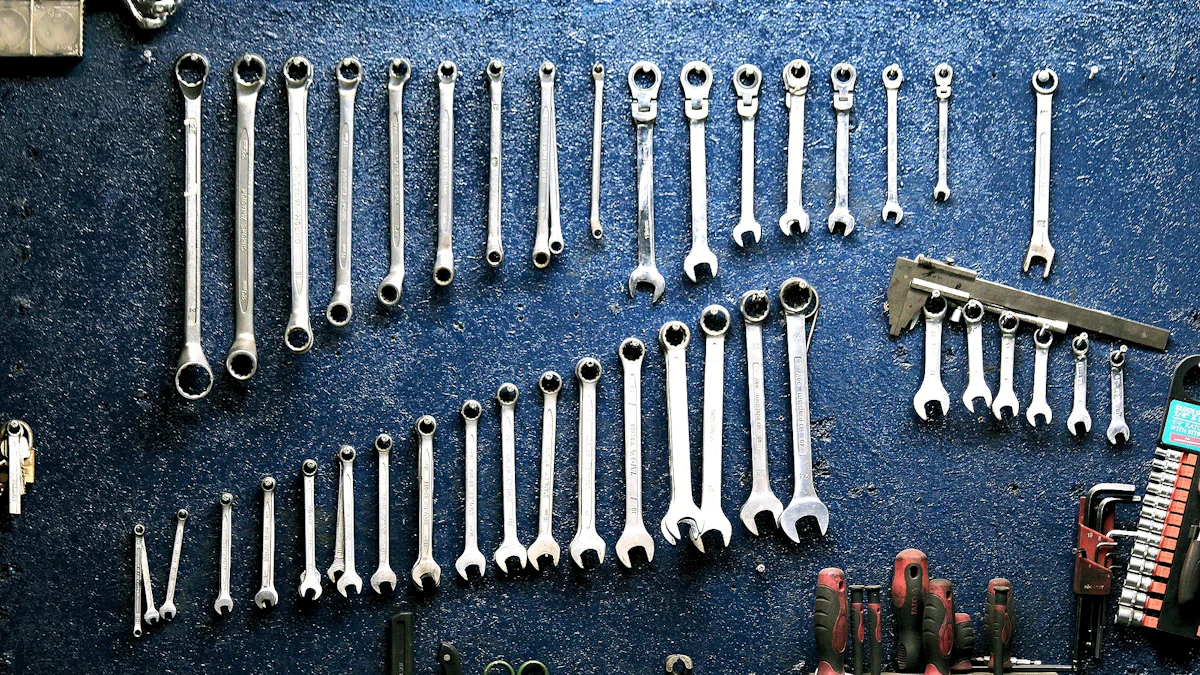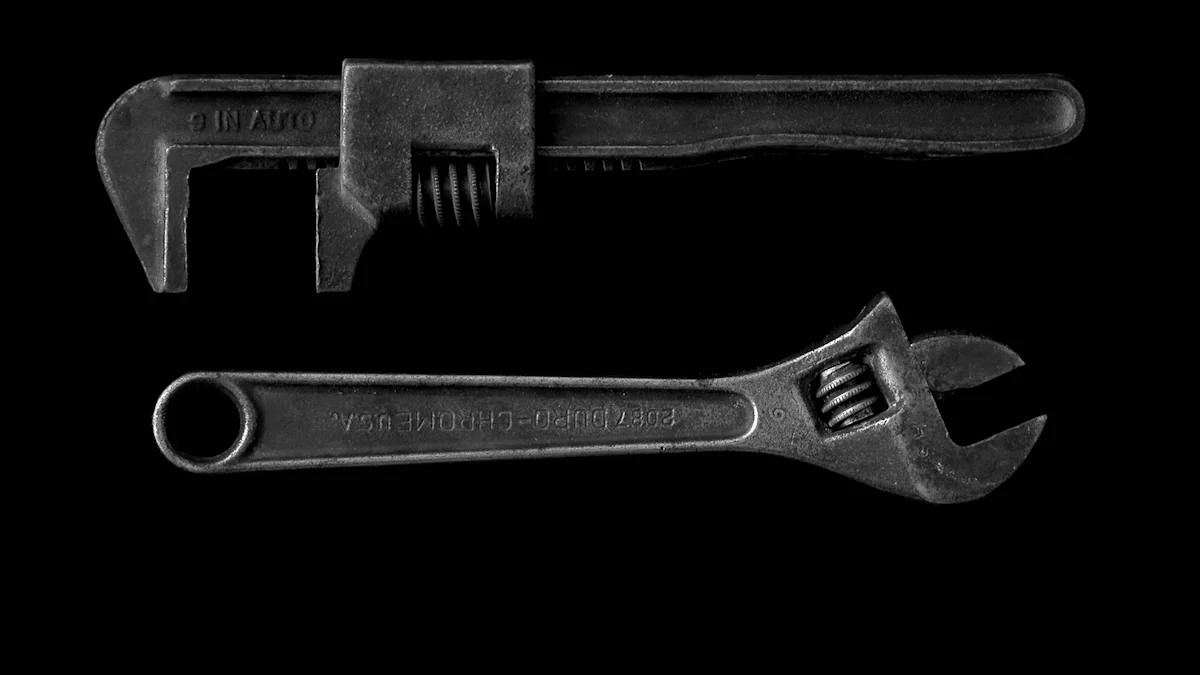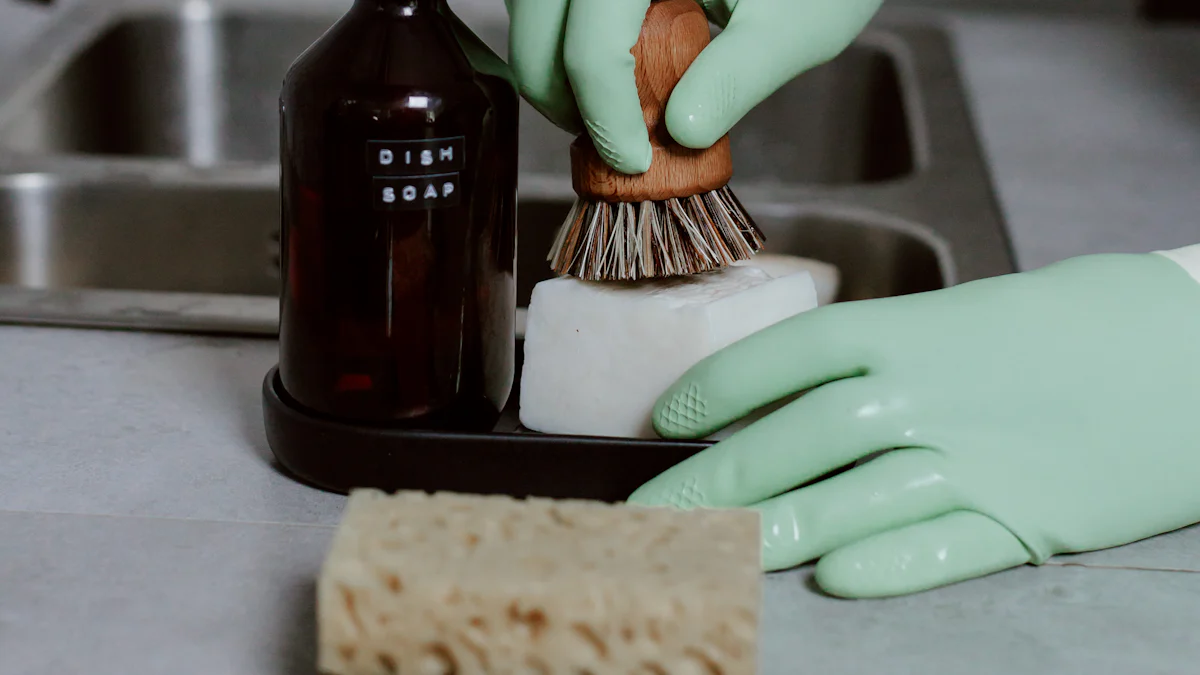
A tap wrench is an essential tool for anyone involved in metalworking or plumbing. This tool holds taps, drills, reamers, and other small tools to be turned by hand. Understanding the different types of tap wrenches can significantly enhance efficiency and precision in various tasks. As an expert once said:
“A tap wrench is a must-have for any DIYer. It makes even the trickiest tap-related tasks a breeze, saving you from unnecessary frustration.”
Knowledge about the various types of tap wrenches helps in selecting the right tool for specific applications, ensuring better results and longer tool life.
What is a Tap Wrench?
Definition and Basic Function
A tap wrench is a hand tool designed to hold and turn taps, drills, reamers, and other small tools. The primary function involves creating threads inside holes, known as tapping. This process ensures that screws or bolts can fit securely into the threaded holes.
What is Tapping?
Tapping refers to the process of cutting internal threads in a hole. A tap, which is a cutting tool, performs this task. The tap wrench holds the tap securely and provides the necessary leverage to turn it by hand. This process is essential in metalworking and plumbing for creating threaded holes.
Basic Components of a Tap Wrench
A tap wrench typically consists of a handle and a clamp or collet. The handle provides the leverage needed to turn the tap. The clamp or collet holds the tap firmly in place. Some tap wrenches feature adjustable jaws to accommodate different sizes of taps. Others have fixed jaws designed for specific tap sizes.
Historical Background
Evolution of Tap Wrenches
The tap wrench has evolved significantly over time. Early versions were simple tools with basic designs. Craftsmen used these rudimentary tools to create threads manually. Over the years, manufacturers introduced more sophisticated designs to improve efficiency and ease of use.
Key Innovations Over Time
Several key innovations have shaped the modern tap wrench. Adjustable jaws allowed for greater versatility in holding various tap sizes. The introduction of ratcheting mechanisms enabled smoother and more efficient turning. Heat-treated materials enhanced durability and longevity, making the tools more reliable for heavy-duty tasks.
Types of Tap Wrenches

T-Handle Tap Wrenches
Design and Features
T-handle tap wrenches feature a T-shaped design with a horizontal handle at the top. This design provides excellent leverage and control during threading operations. The handle often slides to allow for better maneuverability in tight spaces. T-handle tap wrenches are typically made from durable materials, ensuring they withstand significant force without bending or breaking.
Common Uses
T-handle tap wrenches are ideal for creating straight and accurate thread holes. Mechanics, machinists, and maintenance professionals frequently use these tools. The large gripping surface of the handle makes it easy to apply consistent pressure, which is crucial for precise threading. These wrenches are also suitable for home DIY projects that require threading in confined areas.
Adjustable Tap Wrenches
Design and Features
Adjustable tap wrenches have jaws that can be adjusted to hold various sizes of taps. This versatility makes them suitable for different threading tasks. The adjustable jaws provide a firm grip on the tap, ensuring stability during use. However, these wrenches may not be as strong as fixed tap wrenches. Manufacturers often use heat-treated materials to enhance durability.
Common Uses
Adjustable tap wrenches are perfect for users who need to work with taps of varying sizes. These tools are commonly used in both professional and home settings. The ability to adjust the jaws makes these wrenches versatile and convenient for a wide range of applications. Users can easily switch between different taps without needing multiple wrenches.
Ratcheting Tap Wrenches
Design and Features
Ratcheting tap wrenches incorporate a ratcheting mechanism that allows for smoother and more efficient turning. This feature reduces the need to reposition the wrench after each turn, saving time and effort. The ratcheting mechanism can usually be set to turn in either direction, providing flexibility during threading operations.
Common Uses
Ratcheting tap wrenches are highly valued in professional settings where efficiency is crucial. These wrenches are ideal for repetitive threading tasks, as the ratcheting mechanism speeds up the process. Users in automotive, aerospace, and manufacturing industries often prefer these wrenches for their precision and ease of use.
Pipe Tap Wrenches
Design and Features
Pipe tap wrenches are specialized tools designed for threading pipes. These wrenches feature a robust construction to handle the high torque required for pipe threading. The design includes a long handle to provide extra leverage, making it easier to turn the tap through tough materials. The jaws of pipe tap wrenches are adjustable to accommodate various sizes of pipe taps, ensuring a secure grip during operation. Manufacturers often use heat-treated materials to enhance durability and withstand the rigors of heavy-duty use.
Common Uses
Pipe tap wrenches are essential in plumbing and metalworking industries. These tools are used to create internal threads in pipes, allowing for secure connections with fittings and other components. Plumbers rely on pipe tap wrenches for tasks such as installing new piping systems or repairing existing ones. Metalworkers use these wrenches to prepare pipes for assembly in various projects. The ability to handle different sizes of pipe taps makes these wrenches versatile and indispensable in professional settings.
How to Choose the Right Tap Wrench
Selecting the appropriate tap wrench involves considering several factors. The right choice ensures efficiency and precision in threading operations.
Factors to Consider
Material and Build Quality
The material and build quality of a tap wrench play a crucial role in its performance. High-quality materials, such as heat-treated steel, provide durability and strength. A well-built tap wrench withstands significant force without bending or breaking. This durability is essential for heavy-duty tasks.
Size and Compatibility
Size and compatibility are vital when choosing a tap wrench. The tool must fit the specific tap size required for the job. Adjustable jaws offer versatility by accommodating various tap sizes. However, fixed jaw wrenches provide a more secure grip. Users should consider the specific needs of their projects when selecting between adjustable and fixed options.
Application-Specific Recommendations
For Home Use
Home users often require a versatile tap wrench for various DIY projects. An adjustable tap wrench is ideal for home use due to its flexibility. This type of wrench can handle different tap sizes, making it suitable for multiple tasks. Home users benefit from a tool that offers both convenience and versatility.
For Professional Use
Professionals need a tap wrench that delivers precision and durability. A ratcheting tap wrench is perfect for repetitive tasks in professional settings. The ratcheting mechanism allows for smoother and more efficient turning, saving time and effort. Professionals in industries like automotive and aerospace prefer these wrenches for their reliability and ease of use.
Maintenance and Care

Proper maintenance and care of a tap wrench ensure longevity and optimal performance. Regular cleaning and correct storage prevent damage and wear.
Cleaning and Storage
Proper Cleaning Techniques
Clean a tap wrench after each use to remove debris and metal shavings. Use a soft brush to scrub the tool gently. Avoid using harsh chemicals that can corrode the metal. Rinse the tap wrench with warm water and dry it thoroughly with a clean cloth. Lubricate moving parts with light machine oil to prevent rust and ensure smooth operation.
Storage Tips
Store a tap wrench in a dry, cool place to avoid moisture and humidity. Use a tool chest or a dedicated storage box to keep the tap wrench organized and protected. Ensure that the tap wrench is not stored under heavy objects to prevent bending or damage. Label the storage area for easy identification and quick access.
Troubleshooting Common Issues
Identifying Wear and Tear
Regular inspection helps identify signs of wear and tear on a tap wrench. Look for worn-out jaws, bent handles, or loose components. Check for rust or corrosion, especially on older tools. A tap wrench with visible damage may not perform efficiently and can cause threading errors.
Repair and Replacement Tips
Repair minor issues on a tap wrench by tightening loose screws or replacing worn-out jaws. Use manufacturer-recommended parts for replacements to ensure compatibility. For severe damage, consider replacing the entire tap wrench. Investing in a high-quality tap wrench made from heat-treated steel provides better durability and performance.
Understanding the various types of tap wrench enhances efficiency and precision in threading tasks. Each type of tap wrench offers unique features and uses, from T-handle tap wrenches for tight spaces to ratcheting tap wrenches for repetitive tasks. Selecting the right tap wrench ensures better performance and longer tool life. High-quality materials like chrome plating and chromium-vanadium provide durability and corrosion resistance. Proper maintenance and care extend the lifespan of a tap wrench. Apply this knowledge to choose the best tap wrench for any project.
See Also
Discovering the Assortment of Socks for Males and Females
Top Tips for Warm Winter with Soft Comfort Towel Socks
